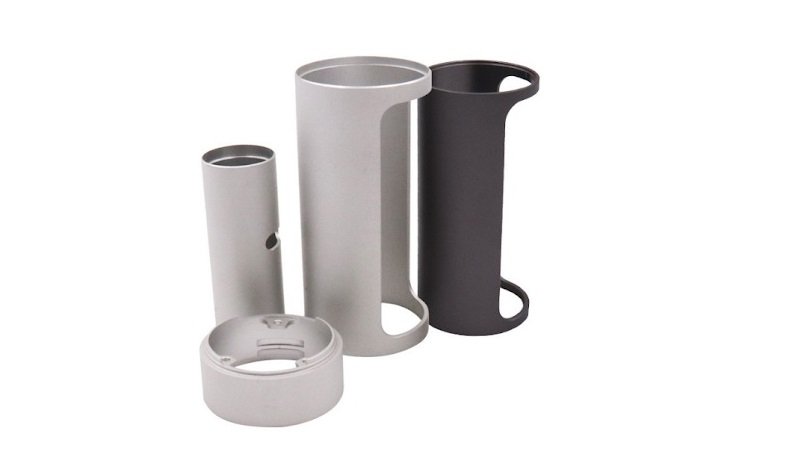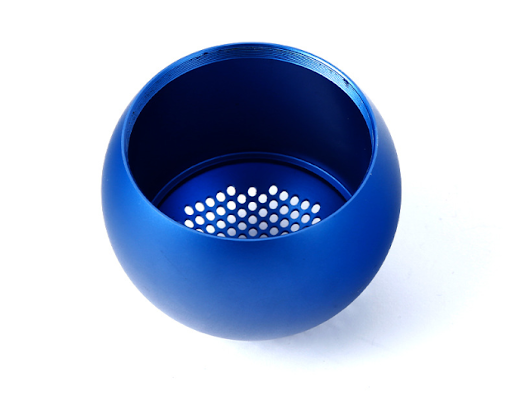Aluminum anodizing is an electrochemical process that enhances the natural oxide layer on the surface of aluminum. The process involves immersing the aluminum in an electrolytic solution and passing an electric current through it.
This results in the controlled growth of a thicker and more durable oxide layer on the aluminum’s surface, which provides increased corrosion resistance, improved wear resistance, and the ability to accept various coloring options.
How Does Anodize Aluminum Work?
Anodizing aluminum is an electrochemical process that involves the controlled growth of an oxide layer on the surface of aluminum. The process is carried out through a series of steps that allow for the formation of a thicker, more durable, and corrosion-resistant oxide layer. Here’s a detailed explanation of how the anodizing process works:
Preparation: The aluminum part to be anodized is thoroughly cleaned and degreased to remove any contaminants from its surface. This ensures that the anodizing process is effective and uniform.
Anodizing Bath Setup: The cleaned aluminum part is immersed in an electrolytic bath containing an acidic solution, typically sulfuric acid. The bath is designed to facilitate the flow of electric current between the aluminum part (acting as the anode) and a cathode placed within the bath. The bath may also contain various additives to control the anodizing process and improve the quality of the oxide layer.
Electrolytic Process: When an electric current is passed through the bath, a reaction occurs at the surface of the aluminum part. At the anode (aluminum part), aluminum atoms are oxidized, releasing electrons and forming aluminum ions (Al³⁺). These ions react with the oxygen ions (O²⁻) from the electrolyte to create aluminum oxide (Al₂O₃) on the surface of the aluminum. This oxide layer grows outward from the surface, effectively becoming an integral part of the aluminum.
Oxide Layer Growth: The thickness of the oxide layer is controlled by factors such as the duration of the anodizing process, the current density applied, and the composition of the electrolyte. By adjusting these parameters, manufacturers can achieve oxide layers of different thicknesses. Thicker oxide layers provide enhanced corrosion resistance and other desirable properties.
Porous Structure: The aluminum oxide layer formed during anodizing is porous in nature. This porosity provides a base for further treatment, such as dyeing or sealing, and allows for the incorporation of various coatings and finishes.
Dyeing (Optional): If desired, the porous oxide layer can be dyed to achieve a specific color. The porous structure allows the dye to penetrate and become trapped within the oxide layer, resulting in a colored surface.
Sealing (Optional): To further improve the properties of the anodized layer, the part can undergo a sealing process. Sealing involves closing off the pores in the oxide layer, usually by using hot water, steam, or proprietary sealing solutions. Sealing enhances corrosion resistance and makes the surface more resistant to wear.
Different Types Of Anodized Aluminum
There are several different types of anodized aluminum, each offering unique characteristics and benefits. The choice of the type of anodizing process depends on the desired properties, appearance, and application of the finished aluminum product. Here are some of the common types of anodized aluminum:
Type I – Chromic Acid Anodizing (Chromate Conversion Coating): This type of anodizing is also known as chromate conversion coating. It involves the use of chromic acid as the electrolyte. Chromic acid anodizing produces a thin and soft oxide layer that offers minimal corrosion resistance but is often used for improved adhesive properties, as it provides a good substrate for painting or bonding.
Type II – Sulfuric Acid Anodizing (Conventional Anodizing): Sulfuric acid anodizing is the most common type of anodizing. It creates a thicker and more durable oxide layer compared to chromic acid anodizing. The oxide layer can be dyed to achieve various colors, making it suitable for decorative and architectural applications. It also offers improved corrosion resistance and wear resistance.
Type III – Hardcoat Anodizing (Sulfuric Acid Anodizing with Higher Voltage): Also known as hardcoat anodizing or sulfuric acid anodizing with higher voltage, this process produces a significantly thicker and harder oxide layer than conventional anodizing. The resulting layer is wear-resistant and has excellent corrosion resistance. Hardcoat anodizing is often used for parts subjected to high wear, such as firearm components, industrial equipment, and aerospace components.
Advantages of Anodizing aluminum parts
Anodizing aluminum parts offers a range of advantages that make it a popular choice for various industries. Here are some of the key benefits of anodizing:
Corrosion Resistance: Anodizing forms a thick and protective oxide layer on the surface of aluminum, significantly improving its resistance to corrosion and oxidation. This makes anodized aluminum suitable for outdoor and harsh environments where exposure to moisture, salt, and other corrosive elements is common.
Enhanced Durability: The anodized oxide layer is harder than the underlying aluminum, providing improved wear resistance. This durability is especially beneficial for components subjected to friction, abrasion, and mechanical stress.
Aesthetic Appeal: Anodizing allows for a wide range of colors and finishes. The oxide layer can be dyed to achieve various shades, providing designers with options to create visually appealing products. The anodized surface also maintains its color and appearance over time.
Electrical Insulation: Anodized aluminum is an electrical insulator. This property is advantageous in applications where electrical conductivity needs to be minimized, such as insulating components in electronics and electrical equipment.
Thermal Insulation: Anodized aluminum has a relatively low thermal conductivity compared to bare aluminum. This makes it suitable for applications where heat transfer needs to be controlled.
Improved Adhesion: The porous nature of the anodized layer improves the adhesion of paints, adhesives, and other coatings, enhancing the overall bonding strength and durability of these applications.
Dimensional Stability: Anodizing is a controlled process that doesn’t significantly alter the dimensions of the aluminum part. This is important for precision components where tight tolerances are required.
Chemical Stability: Anodized aluminum is resistant to many common chemicals, making it suitable for applications in laboratories, chemical processing, and other environments where chemical exposure is a concern.
Read Also: Best VPNs for Netflix Streaming in 2023






































































